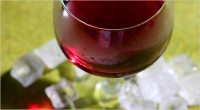Grapevine: The Paradoxical World of America’s Women Winemakers
 The profile and style of popular wines have been similar for centuries: a certain balance of fruit and acidity, a strong tannic backbone and an ethereal olfactory impression. However, in the last few decades that profile has seen subtle, sometimes even radical, refinements in the hands of the world’s winemakers.
The profile and style of popular wines have been similar for centuries: a certain balance of fruit and acidity, a strong tannic backbone and an ethereal olfactory impression. However, in the last few decades that profile has seen subtle, sometimes even radical, refinements in the hands of the world’s winemakers.
In American wineries, where the history of today’s popular wineries is counted in decades rather than the centuries-old tradition of Western Europe, wine styles are still being established. The wine business in the United States is big business, dictated by marketing consultants and focus groups, not family heritage. Smaller wineries, anxious to generate a profit, often seek to satisfy the fickle tastes of consumers rather than their own personal style. But in spite of these influences, change has come.
 Most of today’s American wineries date back to the post-Prohibition era; they tend to be dominated by first or second generation winemakers, a far cry from their European brethren.
Most of today’s American wineries date back to the post-Prohibition era; they tend to be dominated by first or second generation winemakers, a far cry from their European brethren.
The leading edge of this recent change in style, whether in the family cellars of French wineries or the man-built caves of California wineries, is coming from a hitherto unlikely demographic: women winemakers (or winemakers who happen to be women, to be politically correct).
In the 21st century, women have made immense strides in many walks of life. This is apparent in nearly all industries, including the traditionally male-dominated wine industry. Increasingly, wine-related careers are being sought, and successfully plied, by women. Female winemakers are often intrinsically more adept at their trade than their male counterparts. In the last 25 years they have attained worldwide respect for producing many of the most highly regarded–and expensive–wines in the world.
Why is this? Is it DNA-based? Is it simply that women are better suited to produce wine?
It is generally believed that women have more sensitive olfactory senses than men; that women are supertasters, possessing more acute taste buds and cerebral sensors than men. In addition, women have proven themselves to be equal (and at times superior) to men in talent, focus and tenacity. Each of these attributes has contributed to a respect for women’s superior ability to understand the intrinsic beauty and complexity of crafting a fine wine.
Let’s scan the international wine industry for women’s influence in today’s vineyards, wineries and retail shelves. This week I’ll focus on the trend in the United States of the growing population of esteemed women winemakers. Next week I’ll focus on their counterparts in other wine producing regions.
Cult wines represent the epitome of fine wine in the United States, commanding the highest honors, and prices, in the marketplace. The number of cult wines produced by women winemakers is disproportionate to the number of women winemakers in the wine industry. Many of the premier wines in the United States, some commanding prices in excess of $200 (per bottle), are crafted and/or influenced by women winemakers. The praise and price of these wines rival the best that French and Italian winemakers offer each year. The women behind these wines have become cultural icons: Helen Turley (Colgin, Bryant Family), Heidi Barrett (Screaming Eagle, Dalla Valle), Merry Edwards (eponymous label), Helen Keplinger (Bryant Family), Genevieve Janssens (Opus One), Nicki Pruss (Stag’s Leap) and Ashley Hepworth (Joseph Phelps Insignia). These are truly remarkable achievements.
The unsettling anomaly is that, in spite of the success of this elite group, women winemakers represent only 10 percent of the 1,200 wineries in California. The glass ceiling in the male dominated American wine industry has relegated many educated and experienced women to the roles of laboratory enologists and assistant winemakers.

The role of women winemakers is dramatically different in 2012 than it was a quarter century ago. But much remains to be corrected. The opportunity to succeed remains stifled in the United States. However, Western Europe is more daunting.
Next week, Western Europe: glass ceiling – or padlocked oak cellar door?
Nick Antonaccio is a 35-year Pleasantville resident. For over 15 years he has conducted wine tastings and lectures. He is co-host of “Glass Up, Glass Down,” a local cable television series on wine and food; he also offers personalized wine tastings and wine travel services. Nick’s credo: continuous experimenting results in instinctive behavior. You can reach him at nantonaccio@theexaminernews.com or on Twitter @sharingwine.
